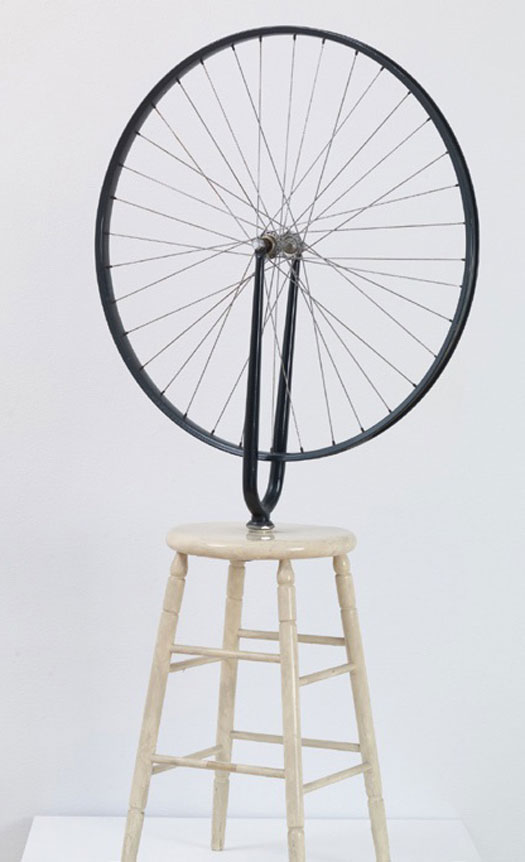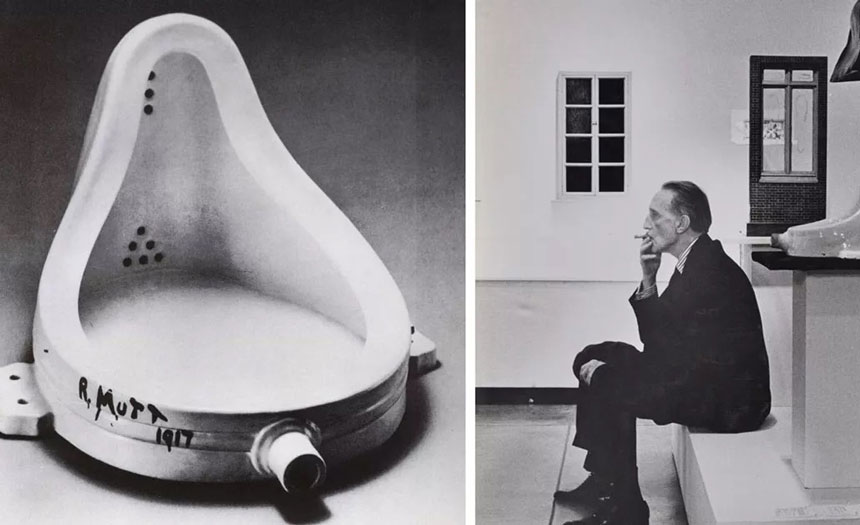By: Schiller Dabiri
 Dada or Dadaism is a nihilistic and absurdist art movement prompted by the social climate following the First World War. The output of the movement spanned visual arts, music, literature (mainly poetry), theatre and graphic design. Dada was established in 1916 in Cabaret Voltaire in Zurich. Rooted in impressionism, cubism and futurism schools, Dada morphed into surrealism after transformations happened in the stances of the founding members. Though short-lived, Dada left lasting impressions on prolific artistic movements to later go on and challenge traditional artistic values.
Dada or Dadaism is a nihilistic and absurdist art movement prompted by the social climate following the First World War. The output of the movement spanned visual arts, music, literature (mainly poetry), theatre and graphic design. Dada was established in 1916 in Cabaret Voltaire in Zurich. Rooted in impressionism, cubism and futurism schools, Dada morphed into surrealism after transformations happened in the stances of the founding members. Though short-lived, Dada left lasting impressions on prolific artistic movements to later go on and challenge traditional artistic values.
Marcel Duchamp
Origins
While several accounts have been given as to how the movement received the name, the most widely accepted explanation suggests that it was adopted by randomly pointing to the French word “dada”, or hobby horse, in a dictionary. Dadaism emerged as a reaction to the disillusionment, devastation and chaos resulting from the brutality and horrors of the First World War, which preoccupied artists witnessing teenagers leaving their homes to face death, destruction, carnage and imprisonment. They grew skeptical of all the social, political and even artistic institutions they deemed responsible for the turmoil of the war. Filled with despair by the seemingly permanent loss of stability and peace, they responded by founding Dadaism. Dada can, therefore, be regarded as a nihilist and anarchist reaction to WWI, which emphasized the rejection of logic and reason and detachment from convention.
Dadaists were anti-art and strived to free literature and subsequently humanity from the yoke of reason, logic and language. Since the school is based on defying traditional social and moral views, the objectives are achieved through nonsensical phrases.
Dada pioneers
The forerunners of Dadaism in Paris were Francis Picabia, Arthur Cravan, and Jaques Vaché, while Man Ray was a prominent figure in New York, a center for Dadaist activity alongside Zurich. However, one of the most seminal names in the movement was the Dada co-founder, Marcel Duchamp.
Marcel Duchamp
Henry Robert Marcel Duchamp (1887- 1968) was a French American Dadaist who blurred the boundaries between artworks and everyday objects. His “readymades” are ordinary objects modified to mock and question long-standing assumptions about the role of the artist as a creator of a work of art.
Born in France, Duchamp was raised in a creative family involved with chess, books, painting and music, in a house filled with paintings and engravings of his maternal grandfather Emile Nicolle. When he was a child, he left home to attend school in Rouen accompanied by his brothers. This was followed by a prize for drawing in 1903, and another in 1904 during his commencement, after which he determined to be an artist. He learned academic drawing from a teacher who tried in vain to protect his students from impressionism and postimpressionism and other avant-garde movements. The artistic transformation undergone by Duchamp is only comprehensible in the artistic climate of Paris in the decade prior to the First World War. After arriving in Paris in 1904, he started painting and showcasing his pieces and working with contemporary trends, as he transitioned from postimpressionism, inspired by Paul Cézanne, to Fauvism and eventually Cubism. He was experimenting and was put off by the notion of repeating a style, as he avoided the artistic practice of creating a signature piece or exhibiting works repeatedly. He met the first Dada group in Paris in 1919, when he was exhibiting his most well-known readymade, a photo of Mona Lisa with a mustache. This represented Dadaist scorn for the art of the past as a part of the civilization that brought about the horrors of the war.

As an artist and anti-artist, Duchamp is a prominent figure in 20th century painting. Yet, except for Nude Descending a Staircase No.2, he was largely ignored throughout his life. Although Dadaists critiqued society, their works were too complicated for the public to comprehend and until 1960 only Avant-garde circles such as surrealists regarded him as a significant artist while to official artistic groups and critics, he was merely a failing eccentric character.
Duchamp is one of the few figures who changed the course of art history. Not only did he transform visual arts, but he altered artists’ minds and paved the way for later styles and new movements in art. Duchamp’s works helped the spread of Western art subsequent to the First World War. He rejected standards and practices of the established art system and art marketing, not so much by authoring articles but by controversial gestures such as submitting a urinal as an art piece and naming it “Fountain”.



